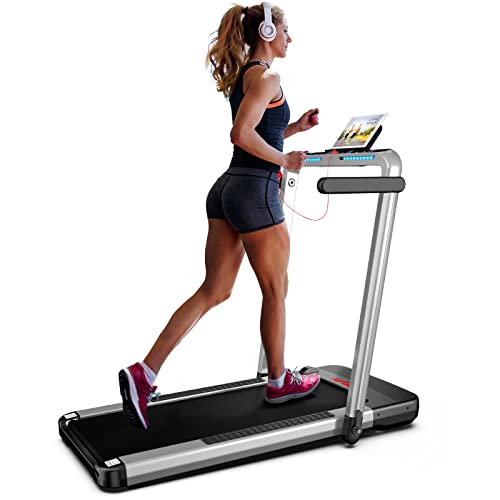
Treadmill Best
FollowOverview
-
Sectors Hospitality
-
Posted Jobs 0
Company Description
What’s The Job Market For Tread Mill Professionals Like?
Treadmills: A Comprehensive Guide to Understanding Their Functionality, Benefits, and Appropriate Selection
Introduction
Treadmills have actually become a staple in modern-day physical fitness routines, tread mill both in homes and health clubs worldwide. They provide a hassle-free and efficient way to maintain cardiovascular health, increase endurance, and assist in weight management. This short article explores the different kinds of treadmills, their advantages, features to think about when acquiring, and some FAQs to assist users in making informed decisions.
Types of Treadmills
When it comes to selecting a treadmill, it is crucial to understand the various types readily available in the market. Here are the main classifications:
1. Handbook Treadmills
- Mechanism: These treadmills have a simple design and count on the user’s efforts to move the belt.
- Pros: More cost effective, quieter operation, no electricity required.
- Cons: Limited features, might not offer the exact same series of workout strength.
2. Motorized Treadmills
- System: Powered by a motor that drives the belt, permitting users to walk or run at a set rate.
- Pros: Greater range of speeds and slopes, equipped with numerous functions such as heart rate displays and exercise programs.
- Cons: More costly and may require more maintenance.
3. Folding Treadmills
- System: Designed for those with minimal area, these treadmills can be folded for easy storage.
- Pros: Space-saving, frequently motorized, versatile features.
- Cons: May be less long lasting than non-folding designs.
4. Industrial Treadmills
- Mechanism: High-quality machines designed for use in fitness centers and gym.
- Pros: Built to hold up against heavy usage, advanced features, frequently include guarantees.
- Cons: Pricey and not perfect for home use due to size.
5. Curved Treadmills
- Mechanism: An unique style that enables users to move the belt using their own energy.
- Pros: Offers a more natural running experience, promotes better running form.
- Cons: More pricey and can be noisier.
| Treadmill Type | Pros | Cons |
|---|---|---|
| Manual | Inexpensive, no electrical energy required | Minimal features |
| Motorized | Range of speeds, advanced functions | Upkeep required |
| Folding | Space-saving, often motorized | May lack sturdiness |
| Commercial | Constructed to last, professional-grade features | Pricey |
| Curved | Natural running experience, promotes great type | Greater cost |
Advantages of Using Treadmills
Treadmills provide numerous advantages that can contribute to one’s total health and fitness goals. A few of these advantages consist of:
- Convenient Workouts: Treadmills allow users to work out indoors no matter climate condition.
- Cardiovascular Health: Regular use can improve heart health by increasing endurance and promoting healthy circulation.
- Weight Management: Effective for burning calories, which aids in weight reduction and management.
- Adjustable Workouts: Users can manage speed, slope, and period to develop individualized workout experiences.
- Safety: Treadmills supply a foreseeable surface, minimizing the danger of falls compared to outdoor running.
- Multifunctional: Many treadmills included features like heart rate screens, exercise programs, and even entertainment systems.
Choosing the Right Treadmill
When choosing a treadmill, possible buyers should consider a number of key aspects:
Features to Consider:
- Motor Power: Typically measured in horse power (HP), a motor strength of a minimum of 2.5 HP is advised for major runners.
- Belt Size: A longer and larger belt accommodates numerous stride lengths, providing convenience throughout workouts.
- Incline Settings: Adjustable slope features imitate outdoor hill running and can increase workout intensity.
- Weight Capacity: Ensure the treadmill can support the user’s weight for security and durability.
- Console Features: Look for easy to use dashboards, exercise programs, and Bluetooth compatibility for streaming music or other functions.
Budget Considerations
- Under ₤ 500: Entry-level manual treadmills suitable for casual walkers.
- ₤ 500 – ₤ 1,500: Mid-range motorized treadmills that use more functions and much better durability.
- ₤ 1,500 – ₤ 3,000: High-end models with innovative innovation, larger motors, and longer guarantees.
- Over ₤ 3,000: Commercial-grade treadmills perfect for regular usage in health clubs or training facilities.
Frequently Asked Questions (FAQs)
1. How frequently should I use a treadmill?
It is recommended to use a treadmill at least three to 5 times a week, integrating numerous strength levels for best results.
2. Can I slim down by utilizing a treadmill?
Yes, consistent usage of a treadmill can contribute to weight reduction, particularly when combined with a balanced diet plan and strength training.

3. What is the best speed to stroll on a treadmill for novices?
A speed of 3 to 4 miles per hour is an ideal variety for novices. It’s vital to begin slow and gradually increase speed as comfort and endurance enhance.
4. Do I require to use a treadmill if I already run outdoors?
Utilizing a treadmill can supply fringe benefits, such as controlled environments and varied workouts (incline, periods) that are not always possible outdoors.
5. How do I maintain my treadmill?
Regular upkeep consists of lubricating the belt, cleaning the deck and console, and examining the motor for optimum performance.
Treadmills are essential tools for those seeking to improve their physical fitness levels in a regulated and convenient manner. With different types available, comprehending their features and advantages is crucial for making an informed purchase. By thinking about individual exercise needs, space availability, and budget plan restrictions, individuals can find the most ideal treadmill that fits their lifestyle. Incorporating treadmill workouts into a balanced physical fitness regimen can lead to better health results and a pleasurable exercise experience.
